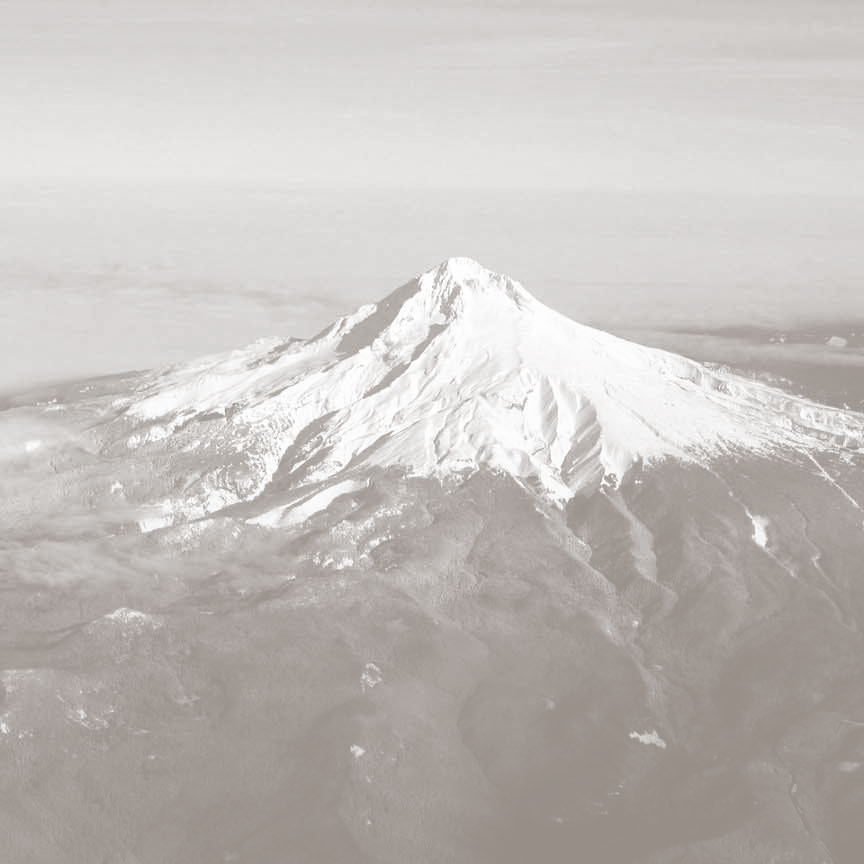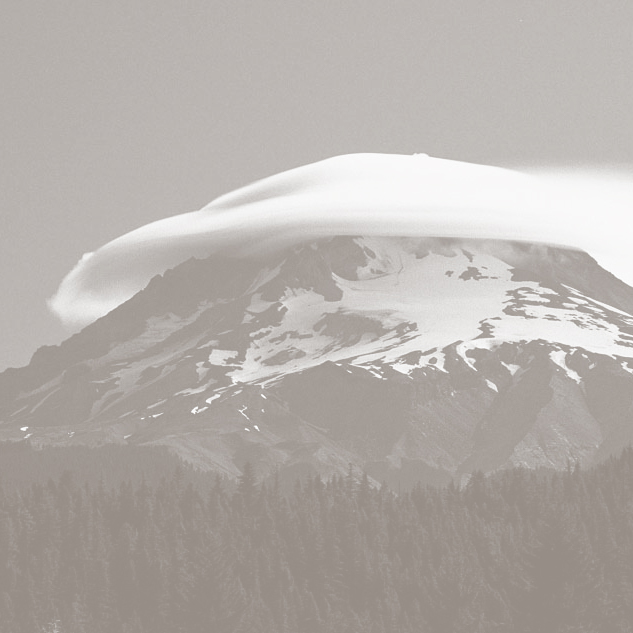
MT. HOOD
Mount Hood volcano, Oregon's highest peak, forms a prominent backdrop to the state's largest city, Portland, and contributes valuable water, scenic, and recreational resources that help sustain the agricultural and tourist segments of the economies of surrounding cities and counties. The volcano has erupted episodically for about 500,000 years and hosted two major eruptive periods during the past 1,500 years. During both recent eruptive periods, growing lava domes high on the southwest flank collapsed repeatedly to form pyroclastic flows and lahars that were distributed primarily to the south and west along the Sandy River and its tributaries. The last eruptive period began in AD 1781 and affected the White River as well as Sandy River valleys. The Lewis and Clark Expedition explored the mouth of the Sandy River in 1805 and 1806 and described a river much different from today's Sandy.

QUICK FACTS
Location: Oregon, Clackamas/Hood River
Elevation: 3,426 (m) 11,240 (f)
Volcano type: Stratovolcano
Most recent eruption: 1865 AD




VOLCANIC HISTORY

The glacially eroded summit area consists of several andesitic or dacitic lava domes; Pleistocene collapses produced avalanches and lahars (rapidly moving mudflows) that traveled across the Columbia River to the north. The eroded volcano has had at least four major eruptive periods during the past 15,000 years. The last three eruptions at Mount Hood occurred within the past 1,800 years from vents high on the southwest flank and produced deposits that were distributed primarily to the south and west along the Sandy and Zigzag rivers. The last eruptive period took place around 220 to 170 years ago, when dacitic lava domes, pyroclastic flows and mudflows were produced without major explosive eruptions. This period includes the last major eruption of 1781 to 1782 with a slightly more recent episode ending shortly before the arrival of the explorers Lewis and Clark in 1805.